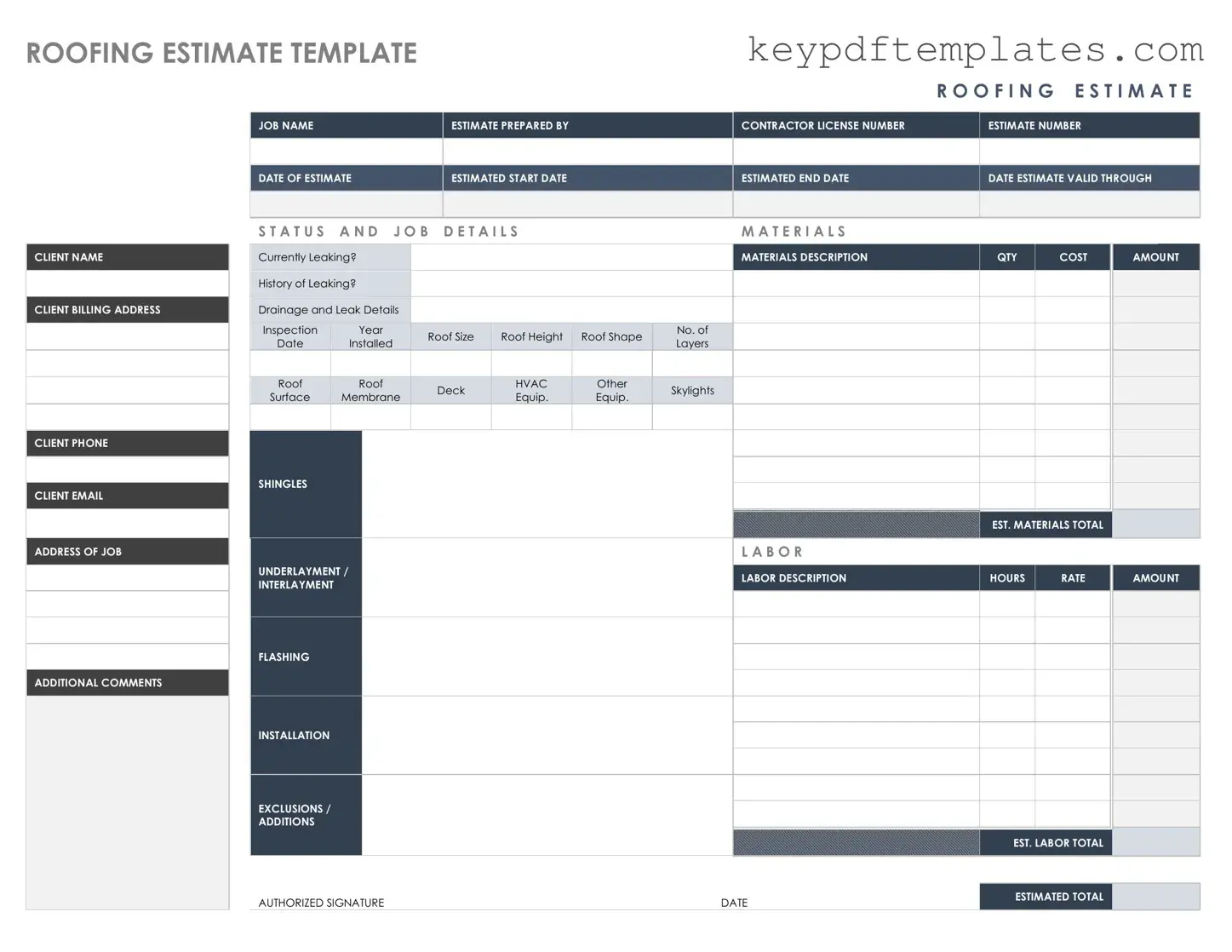Get Roofing Estimate Form
The Roofing Estimate form is a document used to outline the projected costs associated with a roofing project. It provides homeowners with a clear understanding of the expenses involved, including materials, labor, and any additional fees. Having a detailed estimate can help ensure that the project stays within budget and meets expectations.
Modify Document Online
